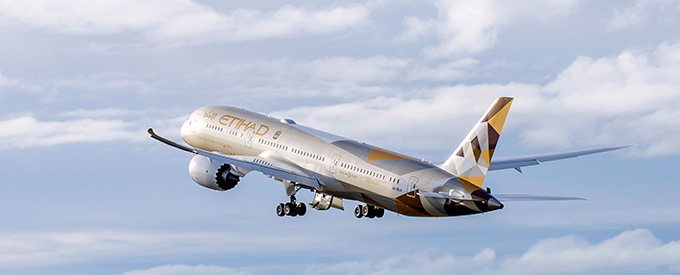2020-12-06
Boeing Forecasts Growth for Middle East Aviation Sector
Boeing anticipates demand for 2,945 new airplanes in the Middle East valued at US$685 billion over the next two decades, as the industry recovers from the COVID-19 pandemic in the medium and long term. The projection is part of Boeing’s 2020 Commercial Market Outlook (CMO), an annual forecast of 20-year demand for commercial airplanes and services.
The CMO reflects the impact of the pandemic and Boeing’s view of nearmedium- and long-term market dynamics globally and regionally. Commercial aviation and services markets will continue to face significant challenges earlier in the 20-year forecast, while showing resilience and a return to growth trend over the longer term.
Over the next 20 years, passenger traffic growth in the Middle East is projected to increase by an average of 4.3 per cent per year, above the global average of 4 per cent growth per year.
Darren Hulst, Boeing vice president of Commercial Marketing, said: “At the historical crossroads connecting Europe, Africa and Asia, the Middle East and its airlines will remain a critical hub of sixth-freedom passenger flows and cargo throughout the 20-year outlook.”
According to the CMO, the Middle East commercial fleet is expected to reach 3,500 by 2039 – more than doubling the current 1,510 airplanes – to address replacement needs and growth. Globally, with key industry drivers expected to remain resilient through the forecast’s 20-year period, the commercial fleet is expected to return to its growth trend, generating demand for more than 43,000 new airplanes.
Key Highlights
In the widebody segment, Boeing forecasts the Middle East demand for 1,280 new passenger airplanes by 2039. While this reflects challenges to long-haul markets, the CMO forecasts a recovery to pre-pandemic trends in the medium and long term. The Middle East’s replacement demand is also a growing share of new widebody airplane demand.
In the near-term, domestic and short-haul markets around the world are expected to recover earlier from pandemic effects. The Middle East single-aisle seat capacity more than doubled over the past five years for destinations outside the region. The CMO projects a near tripling of the single-aisle fleet by 2039 to further serve this growing segment of the market.
Since 2000, Middle East carriers have grown their share of world air cargo traffic from 4 per cent in 1999 to 13 per cent as they grew their widebody passenger and freighter fleets. Freighters represent an area of opportunity for Middle East airlines with the fleet projected to nearly double from 80 in 2019 to 150 by 2039.
Furthermore, Boeing projects a 20-year opportunity for Middle East commercial services valued at US$725 billion, including requirements for supply chain and maintenance, repair and overhaul capability focused on newer airplane technologies and software solutions to improve efficiency.
Boeing’s 2020 Pilot and Technician Outlook forecasts that the region is estimated to require 223,000 new aviation personnel by 2039, including 58,000 pilots, 59,000 technicians and 106,000 cabin crew members.


No Comments